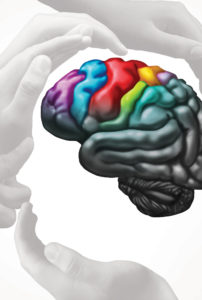How to Motivate and Engage Twice Exceptional Learners
 On a regular day it can be difficult to capture a student’s attention and focus. Right now, when students may be virtual, hybrid, or in-person wearing a mask and maintaining social distance, it’s even harder. When we add giftedness and an ADHD diagnosis, well, teachers and parents who successfully motivate and engage these learners really should wear a superhero cape!
On a regular day it can be difficult to capture a student’s attention and focus. Right now, when students may be virtual, hybrid, or in-person wearing a mask and maintaining social distance, it’s even harder. When we add giftedness and an ADHD diagnosis, well, teachers and parents who successfully motivate and engage these learners really should wear a superhero cape!
Gifted learners with a learning difference like ADHD are also referred to as twice exceptional or 2e. They have brains that are wired to notice all sorts of things going on around them simultaneously. Oftentimes they are affected by stimuli in a more profound way than their neurotypical peers. I prefer to think of this as a potential strength rather than a deficit. The ability to notice multiple things simultaneously, to be so motivated toward some activities that others simply fall away—these are incredible skills. In fact, it’s very hard to teach these skills when someone isn’t inherently wired this way. Yet, if the 2e child isn’t paying attention to or remembering what’s important to the adults around him, it becomes incredibly frustrating for teachers and parents, and the child suffers the consequences.
Characteristics of gifted learners with ADHD
Gifted learners identified with ADHD share similar characteristics, and the presentation is often difficult to tease apart. Consider the chart titled “Gifted Characteristics vs. ADHD Characteristics.” It was developed by combining several researchers’ findings on the characteristics of sustaining attention, listening skills, task completion, motivation, organization, following directions, energy level, impulsivity, verbal manifestations, and reactions to authority.
Gifted Characteristics vs. ADHD Characteristics
| CHARACTERISTIC | GIFTED | ADHD |
|---|---|---|
| Sustaining attention | Poor attention often due to boredom; daydreaming | Difficulty with sustained attention; daydreaming |
| Listening skills | Preoccupation with own ideas and concepts; appears bored | Diminished ability to listen attentively |
| Task completion | Completion of tasks directly related to personal interests | Problems with independent task completion |
| Motivation | Lack of persistence on tasks that seem irrelevant | Avoids and dislikes sustained mental activity unless interested |
| Organization | Organization may be seen as unnecessary depending on the task | Messy and may misplace items needed for work; disorganized |
| Following directions | Questions rules and directions | Difficulty following directions |
| Energy level | Frequent high activity level | Heightened activity level |
| Impulsivity | Highly sensitive, but judgment lags well behind intellectual development | Impulsive; poor judgment in interactions (not waiting turn, interrupting) |
| Verbal manifestations | Magnified curiosity and need to prove yields much talking | Excessive talking |
| Reactions to authority | Intensity that leads to struggles with authority | Problems adhering to rules for behavior regulation |
Edited Chart from To Be Gifted and Learning Disabled, Baum et al, 2017.
ADHD Characteristics from DSM IV-TR, APA, 2000
Gifted Characteristics from Piechowski, 1991; Renzulli et al, 1976; Silverman, 1998
@2020 With Understanding Comes Calm, LLC
The side-by-side comparison in the chart begs the question, “What is the difference between giftedness and ADHD?” There certainly are major differences, including how these characteristics affect a learner’s enjoyment of life and ability to succeed. Interventions may also differ where the gifted student requires ongoing challenge, meaningful and relatable content that often includes an advocacy component, and the ADHD student must learn lagging skills in the areas of executive functions and impulse inhibition.
In my opinion, there are two overall considerations that are extraordinarily important to keep in mind in order to encourage agency and self-confidence in gifted, 2e and ADHD learners. One is to take hold of the assumed positive overlay of the gifted label and ascribe this positive reframe to ADHD in general. This positive, strengths-based approach is an enormous step toward creating independence for all learners. The second consideration is addressing the “now what,” as in, what do we do about behaviors and perspectives that negatively impact a 2e or ADHD child?

The first consideration, using positive reframe, is complex because the downfall in some cases for gifted kids is the assumption that everything comes easy to them. The high expectations, especially for a 2e learner who has some serious deficits, can cause stress, perfectionism, and imposter syndrome based on their uneven profile and asynchronous development. On the other hand, for a learner identified with ADHD, there tends to be a deficit focus. For instance, a typical reaction to an ADHD diagnosis is to wait until interventions cause a change in behavior before allowing the learner to develop his talents.
Taking a cue from the gifted column in the chart, we can certainly positively reframe these behaviors rather than repeatedly asking the same thing: “Remember to…” or “Slow down and read the directions first!” “Don’t you remember I asked you to… before you did…?” We can look at these individual behaviors as containing inherent strengths rather than as Achilles heels. Twice exceptional kids are coached and tutored and pleaded to narrow their focus. This squelching of a 2e student’s essence actually kills motivation and engagement and rarely leads to the desired outcome of “listening and facing forward.” If teachers lean into their 2e student’s natural abilities and passions, they encourage interest, engagement and loyalty. Loyalty breeds responsibility and a desire to please. 2e kids are VERY loyal to those who understand them. Since they often feel misunderstood, they place high value on those who do appreciate their strengths and what is important to them.
Consider this: since we know, literally in black and white, what the 2e child’s challenges in the classroom can be, why not anticipate and plan for them? Rather than trying to change them and their behavior, face it head on with some intentional strategies. For instance, if a child says he is bored, why not ask what about the topic sparks his interest? Let him delve deeper into that aspect of what you are teaching. Or simply ask, What would be an interesting way to learn about this topic? No doubt this learner will have an out-of-the-box idea. Whenever we collaborate and incorporate our 2e students in problem solving, we greatly increase the possibility of their buy-in and dedication.
Strategies to motivate and engage gifted learners with ADHD
As many students are currently learning virtually, or if they are in-person using masks, or just knowing about the pandemic causes great distraction, grabbing the attention of our 2e kids seems even more like “pinning down a cloud.” Keeping in mind that teachers are wearing even more hats than usual, managing simultaneous online and in-person students, reworking lesson plans, and searching for strategies to engage their learners, I propose several interventions on the front end that will enormously affect success and fulfillment on the back end.
Here are some tried-and-true tips for motivating and engaging your 2e students and children that will result in participation, motivation, and loyalty. They are also best practices for all students.
- Know their strengths and interests.
Spend some time getting to know your 2e student. Ask what they love AND what they hate. Flesh out their interests by asking lots of questions. Lean into the dreaded video games and ask them to describe them to you and what they like about them and why. Broaden and narrow your questions so you grasp a wide swath of your 2e student’s interests and passions. - Use your knowledge of students’ interest to make lessons meaningful and relatable.
There is no silver bullet but there is “secret sauce.” The secret sauce for 2e students is making work meaningful and relatable and allowing them to show what they know using a method that they select. If you can incorporate passions and interests into your lessons, you’ll automatically grab your student’s interest. Design assignments in a way that mirrors the video game sequence they described to you or include names and images of characters in different scenarios and problem sets. Incorporate topics your students shared that they’re interested in, and include biographies of experts in those fields into your teaching. - Make use of your 2e students’ energy.
2e students are often enthusiastic and effusive about their areas of interest. Sometimes we think of 2e students as “class clowns.” Some 2e kids are destined for the stage or stand-up comedy circuit! Rather than trying to curb their enthusiasm, if you give them a chance to lead—brainstorm ideas for topics or even introduce themes, units, or assignments—you’ll get their attention and buy-in. An oldie but goodie is to ask the student who forgets to turn in his homework to collect everyone’s homework. This is a great way to avoid nagging and help the student self-actualize without judgment.
Preferential seating for these students should NOT be in the front under the teacher’s nose. This student will do best on the side or in the back—able to pace, sit on a ball, or even sit on the radiator. If the student is learning virtually, and he does best pacing or even running or bobbing up and down, figure out what you need to allow this to happen if that is distracting to you. If the screen needs to be off, then set up a system whereby he checks in every 15 minutes with a comment in the chat box. - Give choices.
You’ve heard this a million times before, but consider creating a survey and having your students vote on types of assignments and topics. Engage in a brainstorming session to ask how they would like to show what they know and offer three or four ways from which they can choose. - Be aware of your learning objective and stick to it.
So often 2e kids lose points or receive poor grades because of a mechanical issue. They comprehend the reading but have spelling and/or grammar mistakes. If your learning objective is understanding nuance and comprehension, avoid taking off points for mechanics. If you can, bifurcate assignments between these two skills. This doesn’t mean to ignore grammar and spelling, it just means focus on those skills specifically in assignments that are not about understanding.
I once had a client whose son—who had dysgraphia—circled the answer within a question and used an arrow to point toward the appropriate answer space. His answer was marked wrong simply because he didn’t write the answer in the blank. The logical question for that teacher was, “Are you testing his ability to write an answer in the blank or are you wanting to know that he understands the question?” Ignoring a student’s knowledge for mechanical errors is demoralizing. - Focus on effort.
Rather than focusing on the grade, find and comment on instances of sustained effort. “You were careful to complete each step of the directions.” “I noticed you used your scrap paper to work out the problem before writing your final answer.” “Wow, you read a lot and learned a lot about this topic.” Paying attention and praising the process of learning encourages sustained effort and risk taking. - Form groups intentionally
Remember number one above: “Know their strengths and interests.” Use this information to create groupings of students who share similar interests. For 2e kids, connection is their lifeblood, but they tend to be often compromised to severely compromised in social success. Help them by making intentional groupings based on their interests and passions. - Teach chunking.
Use a calendar and literally start from the due date and work backwards with your students. Discuss a long-term assignment and ask your students to brainstorm the necessary steps. Then work together with a calendar and a list of dates and match steps to dates. This is a skill that will serve them throughout their lives—teaching them the executive functioning skills of planning and prioritizing.
A fun game to play to help tease out steps is to name an activity like making a sandwich. Then have one person tell another person the steps and have the person doing the activity do exactly what the other person says. If the first step is “put the jam on the bread,” the person doing the activity would take the jar of jam and simply put it on the loaf of bread. The person giving directions will quickly learn that they have to be specific in teasing out steps. - Ask a lot of questions.
Adults often fall into the habit of telling kids exactly what to do. They point out the mistakes they made. They advise students on how to fix mistakes. If you can ask more questions, the student learns from doing rather than from being told. Ask questions like, “How do you feel about that sentence?” “What did you want the reader to learn from that paragraph?” “What steps do you need to do to solve that math problem?” When it’s time to edit the writing, ask the student to read their work aloud. This is the best way to find mechanical errors. Ask them where they naturally paused and whether there was a comma there. Allowing students to find their own errors ensures that their learning is “sticky.” - Notice and honor when your student needs a break.
Everyone is under increasing stress. Even if a student doesn’t have personal stress as a 2e child with finely tuned antennae, he picks up on and may even absorb other people’s stress. Respect your student’s need for a break. Use compassion if he can’t turn in or do an assignment right now. Giving that leeway will ensure higher engagement later.
These are tough times. Anxiety and stress severely impact the ability to focus and engage. Now more than ever we have to strengthen connections and lace our interactions with empathy—for our students and for ourselves. - Take care of yourself, whatever that means to you.
Be kind to yourself. Do whatever fills you up. Be sure to find joy every day, whether that means taking a walk, watching your favorite show with a bowl of popcorn, dancing to loud music, creating art, meditating, eating an ice cream sundae. You’ve earned it. Some external motivation for the hard work you do each and every day is well deserved.
Just as I’m suggesting to positively reframe your 2e child’s or student’s behavior—to adopt a strength-based approach—use these tactics to keep yourself motivated and engaged. Parents and educators, your path right now is fraught with steep learning curves and requires mountainous loads of patience. Give yourself the recognition you deserve. Recognize how hard you are working, the depth of your desire to succeed, and remember, above all, relationships with your students, your children, and yourself, are of the highest value.


 Julie Skolnick, MA, JD, is the founder of With Understanding Comes Calm. She passionately guides parents of gifted and distractible children, mentors twice exceptional adults, trains educators, and advises professionals on how to bring out the best and raise self-confidence in their 2e students and clients. Skolnick serves as secretary to the Maryland Superintendent’s Gifted and Talented Advisory Council, as an advisor for the Bridges Graduate School of Cognitive Diversity, as the Maryland liaison for Supporting the Emotional Needs of the Gifted (SENG), and as a committee member for the National Association for Gifted Children (NAGC). She is also an advisor to The G Word, a feature documentary currently in production. Skolnick produces virtual conferences for educators and parents, hosts a membership community, maintains the 2eResources.com website, and publishes the Gifted and Distractible newsletter and a monthly blog. A frequent speaker and prolific writer, she is also the mother of three twice exceptional children who keep her on her toes and uproariously laughing. Learn more at
Julie Skolnick, MA, JD, is the founder of With Understanding Comes Calm. She passionately guides parents of gifted and distractible children, mentors twice exceptional adults, trains educators, and advises professionals on how to bring out the best and raise self-confidence in their 2e students and clients. Skolnick serves as secretary to the Maryland Superintendent’s Gifted and Talented Advisory Council, as an advisor for the Bridges Graduate School of Cognitive Diversity, as the Maryland liaison for Supporting the Emotional Needs of the Gifted (SENG), and as a committee member for the National Association for Gifted Children (NAGC). She is also an advisor to The G Word, a feature documentary currently in production. Skolnick produces virtual conferences for educators and parents, hosts a membership community, maintains the 2eResources.com website, and publishes the Gifted and Distractible newsletter and a monthly blog. A frequent speaker and prolific writer, she is also the mother of three twice exceptional children who keep her on her toes and uproariously laughing. Learn more at 